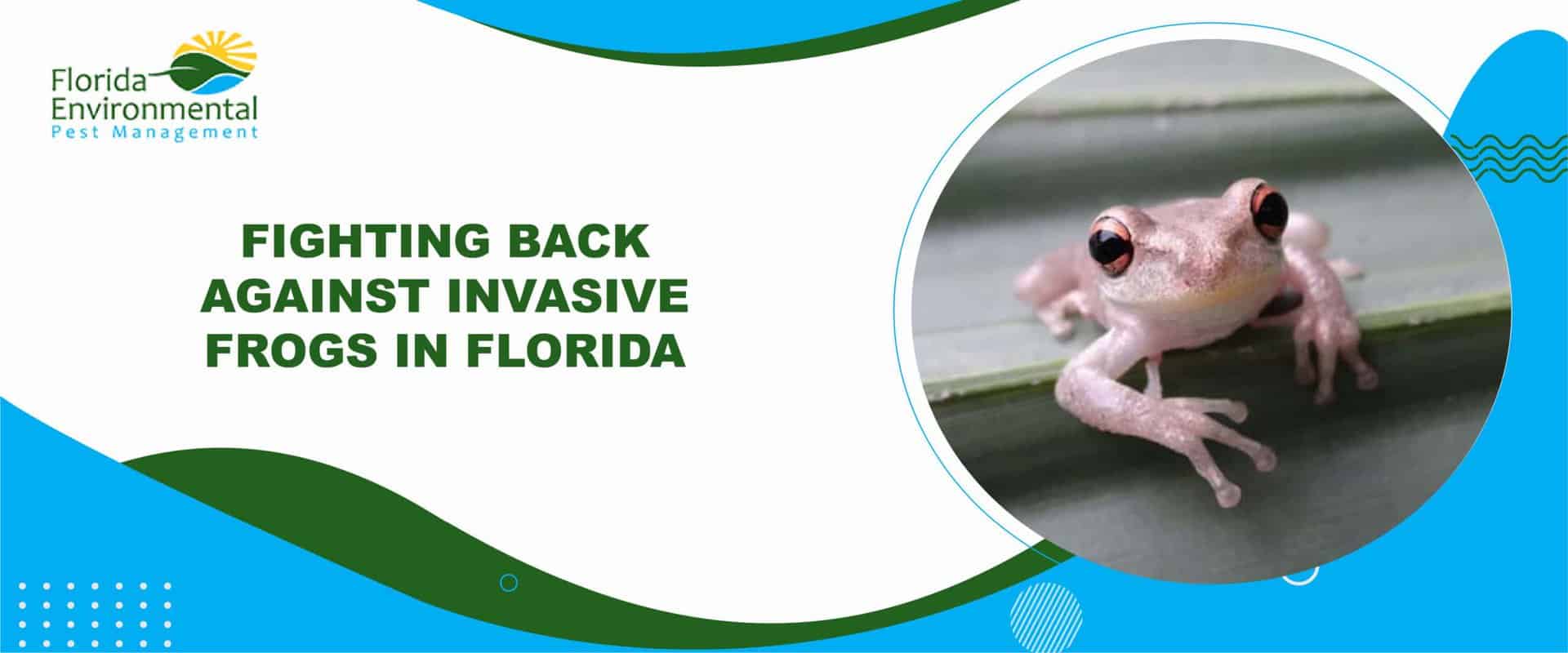When it comes to native poisonous/invasive frogs in Florida, The city doesn’t have a single one. The University of Florida has identified 30 species of frogs and toads that currently call Florida home. Some are not native to the state but have a quickly growing population. Especially causing concern is that the state has been invaded by a breed of poisonous toad known as the Cane Toad, or Bufo Toad. The Bufo Toad is a danger to the ecosystem because they destroy the indigenous amphibians and other animals in the southern state. To fully understand the invasive frog situation in Florida, let’s dive into the different indigenous amphibians of Florida.
What are the Native Frogs of Florida?
While Florida is home to around 30 types of frogs and toads, not all are native. Here is a comprehensive list of amphibians native to the state:
- Cricket Frogs – Eastern, Florida, Coastal Plain
- Fowler’s Toad, Oak Toad, Southern Toad
- Greenhouse Frog
- Eastern Narrow mouth Toad
- Tree Frogs – Pine Barrens, Bird-Voiced, Cope’s Gray, Green, Pine Woods, Barking, Squirrel
- Spring Peeper
- Chorus Frog – Upland, Southern, Little Grass, Ornate
- Gopher Frog, Bullfrog, Bronze Frog, Pig Frog, Florida Bog Frog, Southern Leopard Frog, Carpenter Frog
- Eastern Spade brook
A few invasive species weren’t originally native to Florida but are quickly becoming a concern, such as the Cuban tree frog. The frog is not poisonous like the Cane Toad, but it does secrete an irritant on its skin to ward off possible predators.

The Cane Toad (Bufo)
This toad is also known as the Bufo toad and is part of the marina species. They secrete a milky toxin from the parotid glands. It can kill small animals and pets when they lick, bite, or eat a Bufo toad.
Cane toads are the most invasive species on the planet. Their diet consists of insects, small birds, amphibians, reptiles, and small mammals. They were brought to many countries to control pests on farmland. Because they do not have any known predators in those countries, the Bufo/Cane toads have managed to take over in many rural and suburban areas.
Migration from South and Central America
The cane toad resides naturally in Central and South America but has made its way around the globe. In the 1930s, cane toads were brought to Florida to eat the pests attacking sugar cane fields. As a result, the Bufo toad resides mostly in Central and Southern Florida and has no natural enemies, unlike native southern toads.
Protect Your Pets From Cane Toads
Small dogs are most likely to come in contact with marine toads. Bufo toad toxicity is incredibly intense, and protecting your pets is the best way to avoid contact. The number one thing that will attract Cane toads is pet food left outside. To minimize the likelihood of coming across one of these awful toads, bring outdoor pet food indoors. Other things you can do:
- Feed pets indoors or monitor them while eating outdoors.
- Keeping water bowls indoors is important; they love water in the high heat of the day.
- Keep pet bowls clean and free of food residue.
- Do not leave any food scraps outside. If something gets into your trash, clean it up immediately.
- Mow your grass regularly; then you can see them coming.
- Keep brush piles to a minimum.
- Do not attempt to remove Cane toads yourself. Their skin secretions are not as toxic for you but still unpleasant.
- You are more likely to see them in the rainy season, so be prepared and seek shelter if you see one.
Even with all of the precautions in the world, dog owners may still discover a toad in their pet’s mouth.
What To Do If Your Pet Bites A Marine Toad
It happens, your dog ends up going after a wild animal, and now they have toad poisoning. First, get someone near you to call your veterinarian immediately and let them know what is happening. Meanwhile, you take your dog’s head and lower it down. Rinse their mouth with water to wash toxins forward. This allows the toxins to flow out, so your dog doesn’t choke on any more bufotoxin. To protect yourself, use a dish towel to hold their head. Do your best to avoid getting bit by your furry friend. While getting your dog to the vet, watch for symptoms of Cane toad poisoning. Those symptoms include:
- extremely red gums and a reddish-brown color to mucous membranes
- excessive drooling from the dog’s mouth
- pawing their mouth
- howling or whining
- disorientation
- stumbling
- seizures
Treatment for poisoning by Bufo toads is a lot simpler than many realize. The vet will use water intravenously to force the flushing of toxins. Some will also continue flushing the mouth to ensure all of the milky white toxins are gone. There is no anecdote for the Cane toads poison, so any other symptoms that arise will be treated accordingly. Vets in Central and South Florida are well trained in assisting your pets, and many can fully recover.
How Can You Get Rid of Poisonous or Invasive Frogs in Florida?
We do not recommend that anyone kill Cane toads on their own. Although not a native species, fish and wildlife conservation efforts are working on removing the toads from Florida backyards. If you see any of these invasive frogs, give us a call so that we can come and remove them from your property. If you have captured any Cane toads, be sure to call us immediately. We have the appropriate gear and equipment to handle them without getting poisoned. Better safe than sorry!
Can You Find Frogs In Florida?
Because the environment is so favourable for frogs and other amphibians, Florida is home to many different species of frogs. You will find 24 different frog species, including big, small, poisonous, and harmless frogs, in the entire state of Florida. However, some regions have more frogs than others.
What Is The Most Common Frog Specie in Florida
The Squirrel Treefrog is one of the most frequent frog species in Florida. You can find them in any environment, from forests to hammocks, swamps to pastures, and gardens and fields. They display a wide range of color and pattern variations and can suddenly change their appearance.
What To Do If You Find A Frog?
The animal should be placed somewhere safe from frost and garden predators like cats if you cannot return it to its natural habitat. It does not need to be a “warm” spot; rather, it should be somewhere that is frost-free and protected from the elements, like wood heaps, under sheds, or inside your compost heap.
What Type Of Frog is Found in Florida?
A wide variety of frog species can be found in central Florida’s aquatic habitats. Most of the time, aquatic frogs are found in or near water. The webbed toes of the aquatic frog will be considerably larger than the rest of its body.
What’s The Appearance Of Florida’s Venomous Frogs?
According to the University of Florida, they are tan to reddish-brown, dark brown, or grey, with dark patches on their backs. They are covered in warts. Large parotid glands on the shoulders of cane toads produce a milky poison, which the toads secrete. The parotid glands of native toads are elliptical.
How Can You Know Whether A Frog Is Poisonous?
Amphibians with hazardous skin secretions often have bright warning colours or patterns, like poison frogs. These colours are thought to serve as a visual warning to the predator, a learned response.





